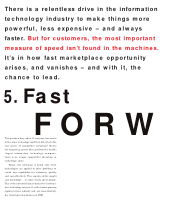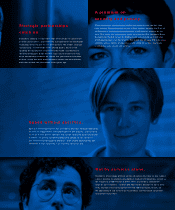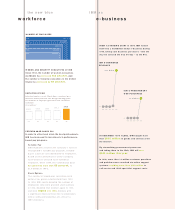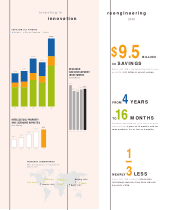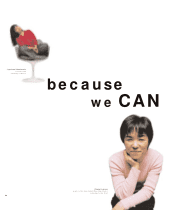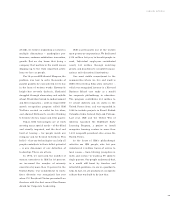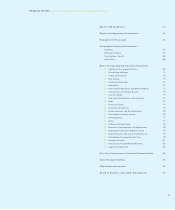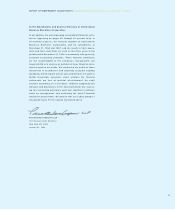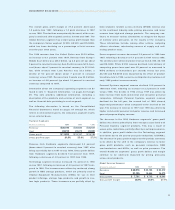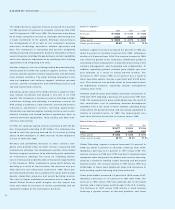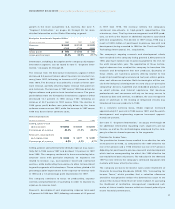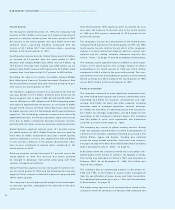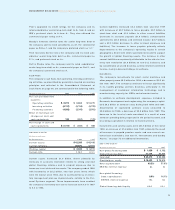IBM 1998 Annual Report Download - page 51
Download and view the complete annual report
Please find page 51 of the 1998 IBM annual report below. You can navigate through the pages in the report by either clicking on the pages listed below, or by using the keyword search tool below to find specific information within the annual report.
AT IBM, we believe leadership is earned in
multiple dimensions – marketplace per-
formance, customer satisfaction, innovation,
growth. But we also know that being a
company that matters in the world means
stepping up to the truly important prob-
lems we face as people.
For 16-year-old Nathaniel Marquez, the
problem was how to solve thousands of
painful puzzles he encountered every day
in the form of written words. Extremely
bright but severely dyslexic, Nathaniel
struggled through elementary and middle
school. Frustration turned to embarrassment
and then resignation – until an elegant little
speech recognition program called IBM
ViaVoice created an outlet for his ideas,
and allowed Nathaniel’s creative thinking
to become stories, essays and term papers.
Today, IBM technologies are at work
meeting many special needs – of the blind
and visually impaired, and the deaf and
hard of hearing – for people inside our
company and far beyond its borders. This
belief – that our technologies can help all
people contribute to their fullest potential
– is one dimension of our definition of
leadership. There are others.
In 1998, we increased the number of
women executives in IBM by 18 percent;
we increased the number of minority
executives by more than 15 percent in the
United States. Our commitment to work-
force diversity was recognized last year
when U.S. President Clinton presented Lou
Gerstner with the first annual Ron Brown
Award for Corporate Leadership.
IBM is perennially one of the world’s
most generous corporations. We dedicated
$116 million last year to benefit people in
need. Individual employees contributed
nearly $44 million through matching
grants, and donations to nonprofit organi-
zations and educational institutions.
Our most visible commitment to the
communities where we live and work is
IBM’s Reinventing Education initiative –
which was recognized last year in a Harvard
Business School case study as a model
for corporate philanthropy in education.
The program contributes $35 million to
15 school districts and six states in the
United States alone, and was expanded in
1998 to include projects in Brazil, British
Columbia, India, Ireland, Italy and Vietnam.
Last year, IBM and the United Way of
America launched the KidSmart Early
Learning Program, a project to install
computer learning centers in more than
1,000 nonprofit preschool sites across the
United States.
At the heart of IBM’s philanthropic
activities are IBM people, who last year
volunteered 4million hours of service to
local causes – from tutoring youngsters in
math and science to teaching PC skills to
single parents. Our people understand that,
in a world still beset by timeless and
intractable problems, we are in a position to
help. In fact, we are products of a corporate
culture that was built to do just that.
49
corporate initiatives



